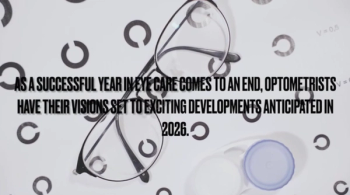
Optometrists good partners for combination with cataract surgery
ECP is a safe and effective IOP-lowering procedure that can be performed as a stand-alone intervention, but is especially useful for patients who are already undergoing cataract surgery.
Boston-Endocyclophotocoagulation (ECP) is a safe and effective IOP-lowering procedure that can be performed as a stand-alone intervention, but is especially useful for patients who are already undergoing cataract surgery, said Leonid Skorin, Jr., OD, DO, MS, at the annual meeting of the American Academy of Optometry.
"Performing ECP in combination with cataract surgery is simple for the surgeon and the patient," said Dr. Skorin, senior staff ophthalmologist, Mayo Clinic Health System, Albert Lea, MN.
The procedure adds only about 5 minutes to the OR time, and it does not increase the risk of postoperative morbidity, Dr. Skorin said. "The recovery process after combination ECP-phacoemulsification is roughly the same as after the cataract procedure alone, so glaucoma patients can derive the IOP-lowering benefit of the ECP procedure without any added burden," he said.
"Furthermore, since ECP is performed through the cataract incision and spares conjunctival tissue, it does not preclude trabeculectomy or another type of glaucoma surgery at a later time should it become indicated," he added.
When performing combination ECP-phacoemulsification, Dr. Skorin first removes the cataract and implants the IOL, easing the access to the ciliary processes. Then, he instills intracameral non-preserved lidocaine under the edge of the iris to improve treatment tolerability. He usually aims to treat at least 270 degrees of the ciliary processes. The treatment endpoint is contracture and whitening.
Postoperative outcomes
"I am aware of only a single reported case of hypotony following aggressive ECP in an adult, but the eye involved had previous surgery," he said. "I have treated nearly 360 degrees of the ciliary processes without any untoward effects."
He added that although the aim of this treatment is to ablate the ciliary processes and the space between them, the latter valleys are less accessible from an anatomic standpoint. This means the entire ciliary epithelium will not be fully treated. Consequently, some residual aqueous production will occur, even when attempting nearly 360 degrees of treatment.
Because the laser in ECP is used to precisely target the ciliary processes, collateral tissue evades damage. The additional laser application does increase the risk of greater inflammation postoperatively, so Dr. Skorin increases the dosing of anti-inflammatory corticosteroid drops to every 2 hours for the first week instead of Q.I.D. Patients can start to titrate glaucoma medications 6 to 8 weeks after surgery.
Newsletter
Want more insights like this? Subscribe to Optometry Times and get clinical pearls and practice tips delivered straight to your inbox.













































.png)


